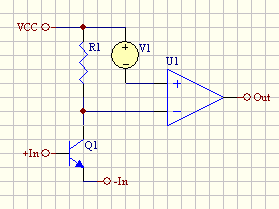Samuel Groner
Well-known member
Hi
Given hFE and rbb' of a bipolar transistor I know how to derive an estimate for voltage and base current noise. But how about emitter current noise? If we assume noiseless collector current is the emitter current noise just equal to base current noise or is there an additional noise source? Thanks for you comments!
Samuel
Given hFE and rbb' of a bipolar transistor I know how to derive an estimate for voltage and base current noise. But how about emitter current noise? If we assume noiseless collector current is the emitter current noise just equal to base current noise or is there an additional noise source? Thanks for you comments!
Samuel



